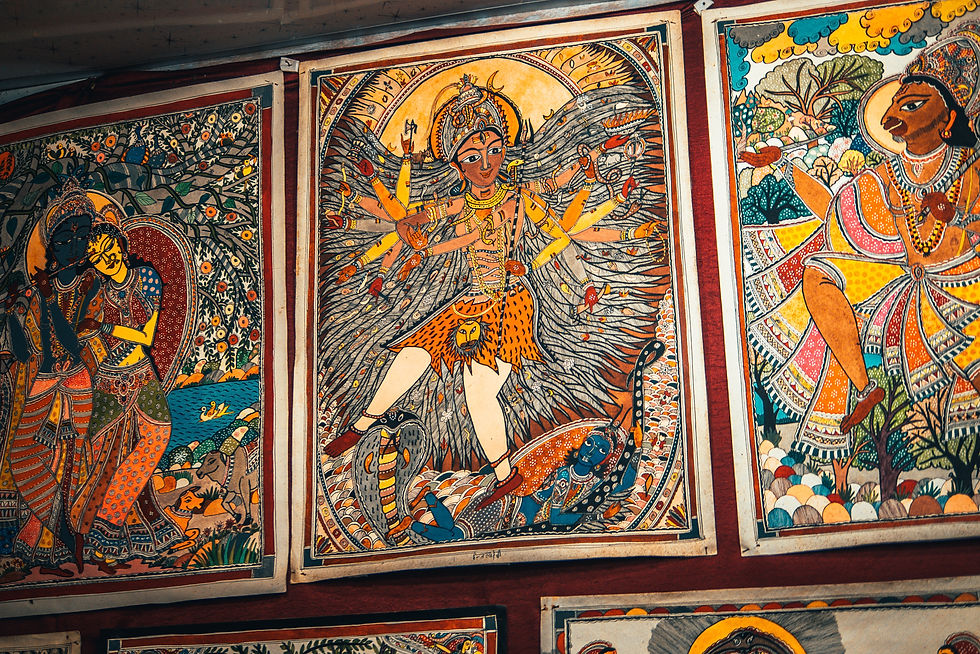How Climate Control Affects Fine Art Shipping in Nepal
- Sashank Khaling Rai
- Jun 26
- 3 min read
Updated: Jul 3

Art is more than just decoration—it’s history, culture, emotion, and often a valuable investment. Whether you're a collector, gallery owner, or simply transporting a few cherished pieces, one of the most overlooked yet critical factors in art logistics is climate control.
This guide explains why climate-controlled fine art shipping is essential when moving artwork to or from Nepal, especially considering the country’s diverse climate and unique geographical challenges.
Why Climate Matters in Art Shipping
Fine art is extremely sensitive to environmental factors like temperature, humidity, and air quality. Here's how they affect your artwork:
Factor | Impact on Art |
Humidity | Warps wood, causes mold, damages canvas, and paper |
Temperature | Cracks paint, distorts adhesives and frames |
Moisture | Fosters fungus and discoloration |
Dust & Pollutants | Corrodes metal, dulls colors, and stains surfaces |
Nepal’s Challenging Climate Conditions
Nepal’s climate ranges from humid subtropical in the south (e.g., Chitwan), to cold alpine in the north. The Kathmandu Valley alone experiences high humidity in monsoons and cold, dry winters, both of which can be damaging to fine art.
If you’re shipping artwork to or from Kathmandu, Pokhara, or Chitwan, climate-controlled transport is no longer a luxury—it’s a necessity.
What is Climate-Controlled Art Transport?
Climate-controlled transport involves regulating temperature, humidity, and airflow within:
Specialized vehicles
Storage units
Air and sea freight containers
This ensures that your artworks are protected from fluctuating external conditions during long-distance or international transit.
When Do You Need It?
✅ You Definitely Need Climate-Controlled Transport If:
You're moving high-value or antique pieces
You’re relocating during monsoon or peak summer
The route includes drastic elevation changes (e.g., from Kathmandu to Terai or abroad)
You’re transporting mixed media, wood, canvas, or paper art
What Happens Without It?
Without climate control, artworks face:
Canvas sagging or cracking
Mold or mildew growth
Discoloration of pigments
Frame warping or splitting
Permanent damage that affects both appearance and value
How Orient International Relocation Handles Climate-Controlled Art Shipping
Orient provides specialized climate-controlled fine art movers in Nepal, built around international standards. Here’s how we do it:
1. Pre-Move Art Assessment
Evaluate medium, size, fragility, and sensitivity
Determine specific environmental needs
2. Custom Crating & Packing
Acid-free, breathable materials
Moisture-barrier wrap
Buffer zones for shock absorption
Humidity indicators
3. Climate-Controlled Transport Vehicles
Insulated interiors with thermostatic regulation
Continuous monitoring of temperature and humidity
4. Air Freight & Sea Freight Climate Protocols
Conditioned containers
Fast handling to limit exposure
Priority freight options for sensitive cargo
5. Storage Options (Short/Long-Term)
Climate-controlled storage in Nepal for transit delays or phased relocation
Case Study: Shipping a Thangka Collection to the U.S.
A German art collector working in Kathmandu commissioned Orient to ship six large Thangka scrolls and carved wooden statues to New York. Using climate-controlled air transport and custom crates, we ensured:
Consistent 20–22°C environment
Humidity between 45–55%
Arrival with no warping or pigment bleeding, despite monsoon rains in Kathmandu
Don’t Let These Mistakes Cost You
Mistake | Why It’s a Problem |
Using standard cargo for fine art | No temp/humidity regulation, leading to damage |
DIY packing with plastic wrap | Traps moisture, fosters mold |
Storing art in garages or basements | Unstable conditions and pest exposure |
Delaying shipment planning | Increases risk of exposure and last-minute errors |
Should You Also Insure Climate-Controlled Shipments?
Yes—even with best practices, risk exists. Insurance gives you peace of mind in the rare event of:
Transit damage
Delays causing exposure
Handling errors at customs
Orient offers art insurance options to cover all shipment stages.→ Learn more about our insurance and protection services
Types of Art That Need Climate-Control the Most
Traditional Nepali Thangka paintings
Wooden antique furniture or statues
Oil or acrylic canvas artwork
Paper-based or framed art
Photographic prints
When Is It Worth It?
If your artwork is:
Monetarily valuable (USD 1,000+ per piece)
Sentimentally irreplaceable
Culturally or historically significant
...then climate-controlled art shipping is absolutely worth the extra cost.
🧊 Pro tip: Always ask your mover for temp logs during transport and photographic condition reports before and after shipping.
Final Thoughts
Art is fragile, both physically and emotionally. If you're moving your collection out of Nepal—or bringing pieces home from your travels—don’t risk them to temperature swings and humidity.
Partner with experts like Orient International Relocation, where every step of your move is managed with care, precision, and environmental control. Because moving your artwork should never mean compromising its value or beauty.



Comments